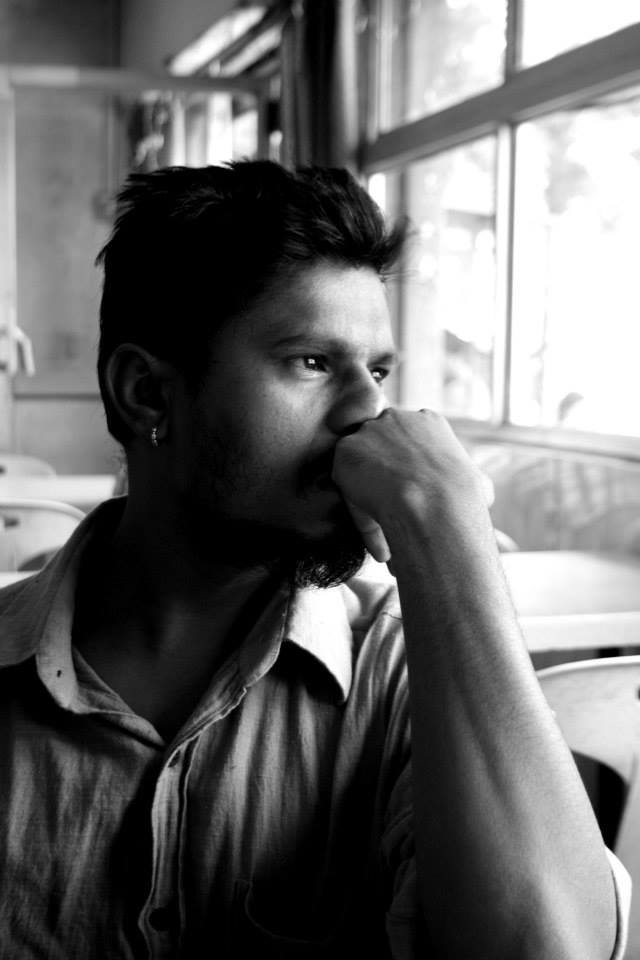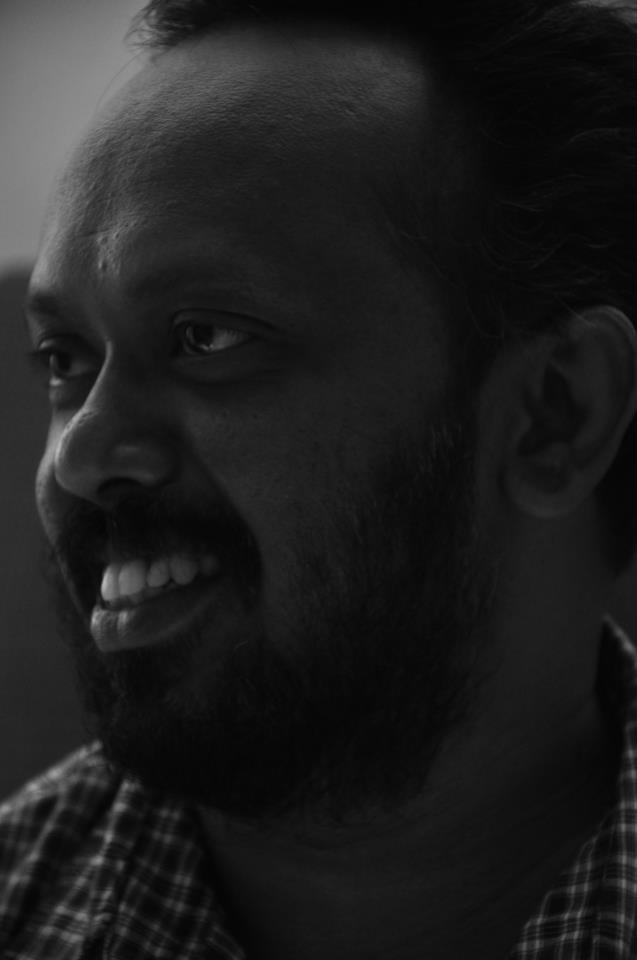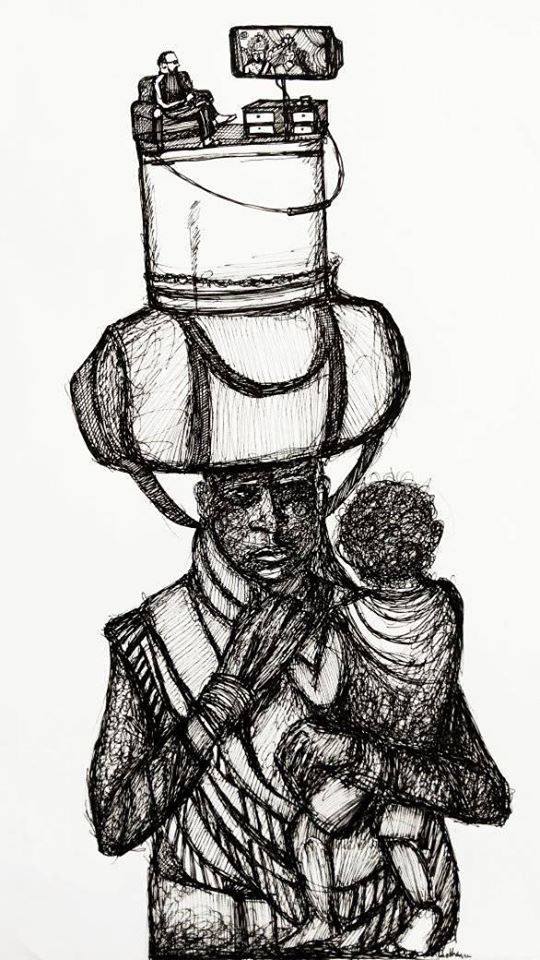Yogesh Maitreya
 The ideology of Hindutva, or the revival of the Vedic dharma or Brahminic religion, represents the starkest contradiction to the Indian constitution, in Maharashtra and throughout India. Its infusion into the soil of Maharashtra can be traced back to the reign of the Peshwas, the period during which untouchability had attained its worst form. In fact the oppressive reign of cruel Peshwas (Brahmins) was built on the destruction of the secularist reign of Shivaji who ‘had never allowed his soldiers to disrespect mosques, Quran or Bible…. And if he found a Bible or a Quran among the property seized during battle, he would receive it with great respect and hand it over to Muslims or Christians in his entourage’1 (Patil, 1992).
The ideology of Hindutva, or the revival of the Vedic dharma or Brahminic religion, represents the starkest contradiction to the Indian constitution, in Maharashtra and throughout India. Its infusion into the soil of Maharashtra can be traced back to the reign of the Peshwas, the period during which untouchability had attained its worst form. In fact the oppressive reign of cruel Peshwas (Brahmins) was built on the destruction of the secularist reign of Shivaji who ‘had never allowed his soldiers to disrespect mosques, Quran or Bible…. And if he found a Bible or a Quran among the property seized during battle, he would receive it with great respect and hand it over to Muslims or Christians in his entourage’1 (Patil, 1992).
The complete reinterpretation of the image of Shivaji or, perhaps, the deliberate veiling of Shivaji’s secularist personality and his egalitarian philosophy, had attained political salience with the inception of the Shiv Sena during 1960s. The Sena’s formative decade, the 1960s, was filled with uneasiness and anxiety over linguistic issues and the inclusion of Bombay (as it was then called) as a part of Maharashtra. Despite such an atmosphere, ‘Maharashtrian society was from early on highly politicised, and probably one of the most secularised in India’2 (Hansen, 1996). Though this sounds true at a virtual level, what Hansen interpreted in his study about the Shiv Sena and Maharashtra was that the idea of secularism in the newly formed state, both in theory and practice, was actually propounded and nurtured by shudras and dalits, and later majorly by the dalit movement through its many facets. And Ambedkar was the major force behind it.
The formation of the idea of hindutva, which is the major political spirit of rightwing politics today, began as early as 1937 when Vinayak Savarkar, a Chitpavan Konkanastha Brahmin who was a Hindu Mahasabha leader and also one of the accused in the assassination of Mahatma Gandhi, had warned:
The Mohammadens are likely to prove dangerous to our Hindu nation and to the existence of a common Hindu state even if and when England goes out. Let us not be stone blind to the fact that they as a community still continue to cherish fanatical designs to establish a Muslim rule in India3. (Savarkar, 1949)
Savarkar’s construction of narratives and their interpretation was fundamentally aimed at creating an artificial reference framework to develop the hindutva ideology, through which, ‘Savarkar tried to give a cultural definition to the word Hindu to stress the common racial history of all Hindus. If in contrast to Pannanand in Punjab, Sarvakar appeared to be confused, that was because the Hindu-Muslim antagonism in Maharashtra was never really to assume the decisive importance it had in Punjab. This was due as noted above, to the smaller number of Muslims in Maharashtra and also to the fact that the main opposition to the dominant urban classes came from the non-Brahmin movement, which was gradually entrenching itself in the countryside and in the legislature’. (Raghavan, 1983)
The reinforcement of the old brahminic religion with the newly constructed nationalistic nomenclature of hindutva was thus the creation of Savarakar’s mind. It was ‘the broadening of the old brahminic religion, with an insistence that all the sects had their unity in a kind of Vedanta, that they all flowed from the fount of the Vedas, emerged as an ideology adhered to by almost all upper caste intellectuals’ and the ‘definition by V.D.Savarkar, considered a major founder of the hindutva philosophy, that a hindu was ‘someone who accepted India as his holy land and his fatherland’ made explicit what almost everyone assumed’ (Omvedt, 2004). This was the forceful and anxious construction of the identity and the project of homogenisation out of the completely heterogonous caste society of India – the developing ideology of ‘Hindu Mahasabha’ to which Savarkar was attached as a member.
It was also an antithesis to Ambedkar’s growing and enhancing perceptions on Indian society in which he, with his iconoclastic analysis of Indian history and his sharply incisive dialectics, interpreted the idea of India as an idea in progress and hence a project in making. Nobody had realised that ignoring Ambedkar’s idea of India would lead it into political, social and economic disaster. In stark contrast to Ambedkar’s interpretation of the idea of India, Savarkar went on to proclaim: Hindutva is not a word but a history. Not only the spiritual or religious history of our people as it is sometimes taken to be by being confused with the other conjugate term Hinduism, but a history in full (Savarkar V. D., 1923).
It must be noted that this idea of hindutva has its genealogical origin in brahminic reinterpretation of the time. The caste society of India, with brahmins at the helm, was witnessing other significant revolutions in the form of the adi-dharmi movement in the north, adi-dravida movement in the south and the dalit movement in Maharashtra, especially. Therefore it felt the great urge to remould the historic interpretations of what had constituted India in order to shape its future course which was, axiomatically, the course defined by the brahminic interpretation of India.
~
After the assassination of Gandhi in 1948, RSS and Hindu Mahasabha were assumed to be fanatic organisations and as a result of this the Congress government banned RSS several times in the following decades. For a decade or so after Gandhi’s assassination, RSS and organisations like Hindu Mahasabha were inactive in the public eye and remained so until the 1980s when in Maharashtra its political wing BJP allied with the Shiv Sena, which was gaining popularity in Maharashtra as the party of hindutva and a force to protect the Marathi Manus. Although, its pilot agenda was to bring justice to the Marathi Manus (Marathi speaking people) in Maharashtra, who, according to it were losing their identity and jobs as south Indians were allegedly encroaching upon their businesses and opportunities of employment. It is interesting to note how this populist discourse of the Shiv Sena keeps changing its artificial enemies, from south Indians to north Indians to Muslims to dalits.
1960s was the populist decade in terms of the rise of the ‘linguistic spirit’ in the history of Maharashtra, and also because it was newly formed, majorly on linguistic lines. It is here that the Republican Party of India (RPI) also actively participated. Amid this populist sense of being the state of Marathi people ‘Thackeray launched the Shiv Sena as a political party on 21st June 1966, with Marmik as its mouthpiece. He highlighted how south Indians were grabbing jobs in Bombay to effectively deflect the attention of the working class from class struggle, endearing himself to the industrialists and political class. After the Sena’s first Dussehra rally on 30 October 1966, which was addressed by the then important Congress leader Ramrao Adik, the returning Shiv Sena mob attacked and burnt south Indian shops and restaurants with impunity’. (Teltumbde, 2012)
With the growing popularity among the Bombay’s middle classes, especially Brahmin clerks and bureaucrats, the working class movement of its mill-workers witnessed a drastic decline. In its first phase, Shiv Sena was inclined to focus on the agenda of Marathi identity and was determined to increase its muscle power, by involving and attracting many unemployed youths as the lower echelon of SS; those were mostly from SC/ST/OBCs. Thackeray had started his political career as a leader who wanted to defend, protect, and bring change in Marathi people’s lives, obscuring the caste-dynamics among the Marathi people. He became popular in Bombay’s Marathi populace; his acidic speeches against politics, dalits, communists, and congress of that time was one of the reasons for his popularity. For a decade or so, Shiv Sena remained only as a Bombay-based party.
The rising dalit politics in the form of Dalit panthers, who swept and shook the political discourse of Maharashtra during 1970s on the issues of growing numbers of atrocities against dalits all over Maharashtra and attacking the brahminic notions of hindu society through their highly energised literary pieces, made the Shiv Sena strategise its affairs with the Republican Party of India. The RPI’s leadership problems and inability to raise the issues of dalits had been furiously attacked by the Panthers. Shiv Sena’s ‘alliance with the RPI in the 1973 municipal elections was, for both, intended to counter the impact of the rise of a militant dalit movement, called Dalit Panthers. The Panthers were seen as closely linked to the communists and other leftist organisations of Bombay.’ (Lele, 1995) Thus, they deployed dalits against dalits in the electoral politics and fractured the growing sense of resistance from militant dalits.
This became visible in electoral politics in the 1980s. In this same period, ‘Thackeray and his lieutenants were approached by a large number of young enterprising men from small towns all over Maharashtra, seeking admission to the Shiv Sena and permission to start local Shakhas in small towns and remote areas in Marathwada and Vidarbha’. (Hansen, 1996) It was the beginning of vernacularisation of populist politics of Shiv Sena which later shaped into the vernacularisation of hindutva in Maharashtra with the shifting agendas of Shiv Sena from Marathi Manus to hindutva. Interesting to note that the Shiv Sena had never engaged with the discourse of amelioration of people’s lives through economic and infrastructural development as it went on to become popular among the lower income and rural localities. This only explains the castiest framework of feudalistic upper castes in rural areas and increasing caste biases of urban upper castes, as Shiv Sena would often present itself as anti-dalit blatantly in public speeches.

On the other hand, the alternative discourse of the time was noting the notoriousness of Shiv Sena. It was the period when the Shiv Sena was defined as ‘a network of gangs which thrived on extortion of protection money from hawkers, businessmen and shopkeepers. It also became known for extortion from and actual involvement in the various illegal deals in the larger construction, contraband and drug-trafficking industries. This image led to some decline in its support from the white-collar and petty bourgeois elements whose sensibilities were injured by this criminalisation’ (Lele, 1995)
By 1990s, the political scenario in Maharashtra was moving towards the decline of Congress rule. Shiv Sena was to rule the state of Maharashtrain the mid 90s. It was majorly Bombay, that was deciding and shaping the discursive space of politics in Maharashtra; and the existence of Bollywood, the Stock Exchange, trade of various kinds, underworld, everything seemed to make the city a big part of popular discourse, sidelining real issues like agrarian distress, workers’s problems, education, atrocities against dalits etc.
~
It was during the 1990s that the underworld in Bombay was also active and some prominent individuals in it happened to be Muslims. Shiv Sena found a political opportunity there. It ‘effectively used these images of individual Muslim dons of crime syndicates to convict the entire Muslim community as one of traitors, profiteers, criminals, ruthless and aggressive propagators of their faith and wanton producers of too many children’; simultaneously, it also tried to subvert dalit politics. To quote Lele: ‘since neo-Buddhists (mostly ex-mahars) are numerically larger and socially better off among the dalits, the Sena uses Hindutva to split off the other castes within the community of dalits. It portrays itself as being opposed to caste hierarchy, with claims that it violates the true spirit of Hindutva’ (Lele, 1995). It thus started projecting a new kind of caste politics, as old as the Congress’s, which entailed deploying dalits against dalits. This always benefitted the brahminic/upper castes’ political ambitions and helped sustain their hegemony over all political, economic and social resources.
1990s was the time in which the need to reinforce the infusion of hindutva among people was strongly felt by Shiv Sena’s political partner, BJP. It was the rath yatra, led by BJP politicians that was to shape the future discourse of the political domain in India. This yatra culminated in the demolition of the Babri Masjid. The effects of it were much intense and decisive in the political arena. Following the demolition of the Masjid, Hindu-Muslim riots and several bomb blasts took place in Bombay. Thereafter, nothing remained as before.
Shiv Sena supported the demolition of the Babri Masjid. It was trying to shape its new ideological standing on which it would further its political career. Through the rath yatra and demolishing the Masjid, BJP too exercised its muscle power. Shiv Sena saw the coming of hindutva as a decisive factor in the political scenarios of not only Maharashtra but all of India. Meanwhile Shiv Sena continued to exercise its old traits and strategies, ‘With the combined strategy (a) of riots to identify and punish Muslims (and in specific situations neo-Buddhist dalits) as the main perpetrators of the contemporary malaise affecting all sectors of the working population, and (b) of electoral enticements to divide that population through inter-caste, inter-religious competition, the Sena made substantial gains in rural Maharashtra during the 1990 elections’. (Lele, 1995)
‘The Shiv Sena used the Shakhas to establish its hegemony over the neighbourhood and exploited this dominance for its own political agenda’. (Shaikh, 2005) The Shakhas, though loosely managed and not much significant in manifesting the strategic dimensions of Shiv Sena, remained important in the sense that they were in locations which people could easily approach. These Shakhas served as cultural centres and points for people to meet, organise the hindu festivals, and cultural rituals propagating the Shiv Sena’s newly adopted ideology of hindutva. Creation of Maha Aarti (grand aarti) was one such creation where one could notice the rising consciousness of hindutva among people. This hindutva consciousness wasn’t only limited to SS, it reached various locations. One incident that illustrates this fanaticism happened in Pune when ‘reacting to certain passages in the book, about 150 people belonging to the Sambhaji Brigade, named after Shivaji’s son, ransacked the reputed Bhandarkar Oriental Research Institute in Pune on January 5, 2004. They destroyed 18,000 books and 30,000 rare manuscripts, according to a submission made in the Supreme Court’ (Date, 2007). The appropriation of Shivaji is a lamentable affair showing how historical facts are used for political mileage in the politics of Maharashtra.
Unlike earlier, a year or two ago, I had also witnessed the loud and huge celebration of Rama Jayanti in Nagpur, apparently organised by BJP and its supporters. This also explains how the idea of hindutva has been manifesting itself in changing times. Of course, political success of rightwing parties like BJP and SS’ populist strategies remain the core reason behind it. The notion of hindutva has not remained limited only to the physical spatiality of social life, it has even been infused into virtual spaces like Television, Cinema and symbolic nomenclatures, such as the name of Planning Commission being changed to ‘Niti Aayog’ appending brahminic textual reference to it.
Recently, BJP came up as the decisive winner in Maharashtra elections and formed the government with its old partner SS, although there was some bitterness in the alliance while forming the government. However, the infusion of the notion of hindutva has been widespread with the Shiv Sena’s longstanding efforts to communalise the epistemology of people combined with BJP’s ideological strategies (both triggered from upper caste locations). They have both constructed the psychological framework of Hindus in Maharashtra.
The recent murders of Dabholkar and Pansare and the lack of success in identifying the criminals, with no arrests so far, only underline the environment of intolerance and communalism in Maharashtra. This also poses a real threat to anti-caste politics which aims at the democratisation of public life and spaces in the state which once was called as progressive Maharashtra.
~
References
Date, V. (2007). Politics of Shivaji. Economic and Political Weekly.
Hansen, T. B. (1996). The vernacularisation of Hindutva:The BJP and Shiv Sena in rural Maharashtra. Sage Publications.
Lele, J. (1995). Saffronisation of Shiv Sena: Political Economy of City, State and Nation. Economic and Political Weekly.
Omvedt, G. (2004). Ambedkar: Towards an Enlightened India. Penguin books.
Patil, S. (1992). Shivajichya Hindvi Swarajyache Khare Shatru Kon- Muslims or Brahmins? Pune: Mavlai Prakashan.
Raghavan, T. C. (1983). Origins and Development of Hindu Mahasabha Ideology. Economic and Political Weekly.
Savarkar, V. D. (1923). Hindutva or Who Is a Hindu.
Savarkar, V. D. (1949). Hindu Rashtra Darshan. 25.
Shaikh, J. (2005). Worker Politics, Trade Unions and the Shiv Sena’s Rise in Central Bombay. Economic and Political Weekly .
Teltumbde, A. (2012). Bal Thackeray and Maharashtra’s Dalits. Economic & Political Weekly.
~~~
Yogesh says:
My name is Yogesh Maitreya. I am from Nagpur. I am doing my M.A in Criminology and Justice (2013-15) from TISS (Tata Institute of Social Sciences, Mumbai).
Cartoon by Unnamati Syama Sundar.









